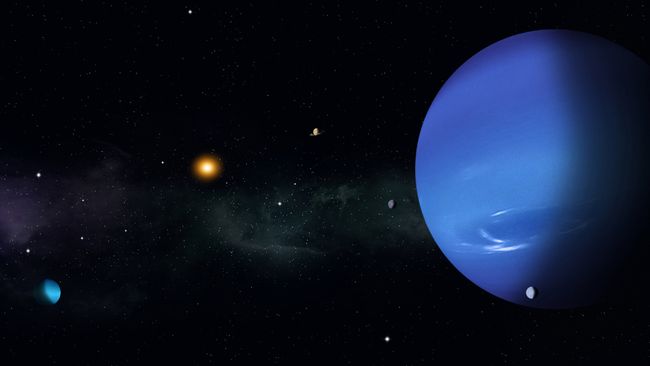Three recently discovered moons orbiting Uranus and Neptune will be given names inspired by both Shakespearean characters and Greek goddesses.
The International Astronomical Union has verified the presence of three moons that are currently unnamed – one circling Uranus and two revolving around Neptune.

The solar system has recently welcomed three new official residents – a trio of small moons, with one orbiting Uranus and the other two circling Neptune. These moons were initially observed several years ago, and their existence has now been confirmed by the International Astronomical Union’s (IAU) Minor Planet Center, the organization responsible for naming new celestial objects within the solar system. The three moons have been assigned numerical designations and will soon be bestowed with formal names inspired by literature and mythology. Uranus’ latest moon, S/2023 U1, measures approximately 5 miles (8 kilometers) in diameter, making it one of the smallest moons known to orbit any of the eight planets in our solar system, comparable in size to Mars’ moon Deimos.
With an orbital period of about 680 days around Uranus, this diminutive moon increases the planet’s total moon count to 28. Like its fellow Uranian moons, S/2023 U1 will eventually be named after a character from the works of William Shakespeare, joining the ranks of previously discovered moons such as Titania, Oberon, and Puck.
Neptune’s latest additions to its satellite family, S/2002 N5 and S/2021 N1, have diameters of approximately 14.3 miles (23 km) and 8.7 miles (14 km) respectively. S/2021 N1 completes its orbit around Neptune in approximately 9 years, while S/2002 N5 takes nearly 27 years to complete its journey around the farthest planet from the sun. With these new discoveries, Neptune now boasts a total of 16 known moons. As is customary for Neptunian moons, these recently acknowledged bodies will be named after the Nereids, the daughters of the sea god Nereus from Greek mythology.
The identification of these moons was no easy task, considering their small size and the vast distance that separates them from our planet. Ground-based telescopes were employed to spot each of these celestial bodies.
“The detection of these three newly found moons represents a remarkable achievement, as they are the faintest ever observed around these two ice giant planets using ground-based telescopes,” stated Scott Sheppard, an astronomer at the Carnegie Institution for Science in Washington D.C., who played a role in all three discoveries. “Special image processing techniques were necessary to unveil these faint objects.”

The recent findings showcase the advancements in astronomical techniques and equipment, enabling scientists to delve deeper into the farthest corners of our celestial vicinity. These breakthroughs include the utilization of image stacking and the utilization of more advanced ground-based telescopes. As a result, researchers have been able to uncover a multitude of celestial bodies, including the recent trio of moons.
However, it is worth noting that these are not the only moons that have been discovered in recent times. In February 2023, the International Astronomical Union (IAU) confirmed the existence of 12 new moons encircling Jupiter, elevating its total count to 92, surpassing all other planets. Nevertheless, in May of the previous year, the IAU confirmed an astonishing 62 moons orbiting Saturn, boosting its total count to 145 and reclaiming the title of the planet with the most satellites from Jupiter. It is intriguing to note that a significant portion of these newly discovered moons, which typically spanned only a few miles in diameter, were detected using telescopes based on Earth.
Do not forget to share your opinion with us to provide you with the best posts !



0 Comments